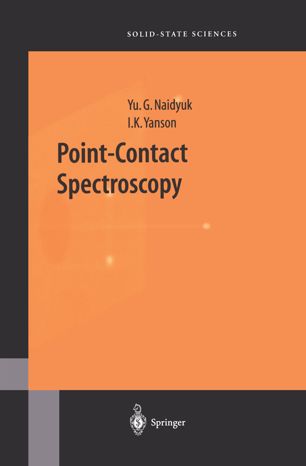

Most ebook files are in PDF format, so you can easily read them using various software such as Foxit Reader or directly on the Google Chrome browser.
Some ebook files are released by publishers in other formats such as .awz, .mobi, .epub, .fb2, etc. You may need to install specific software to read these formats on mobile/PC, such as Calibre.
Please read the tutorial at this link: https://ebookbell.com/faq
We offer FREE conversion to the popular formats you request; however, this may take some time. Therefore, right after payment, please email us, and we will try to provide the service as quickly as possible.
For some exceptional file formats or broken links (if any), please refrain from opening any disputes. Instead, email us first, and we will try to assist within a maximum of 6 hours.
EbookBell Team

4.4
12 reviewsA new type of spectroscopy, Point-Contact Spectroscopy, was created for the study of conduction electron interaction mechanism with a class of elementary excitations in solids. The goal of this book is to introduce readers to Point Contact Spectroscopy.
The physical principles of spectroscopy of quasi-particle excitations in metals at low temperatures by means of point contacts are presented. The point contact constitutes a tiny metallic bridge connecting bulk electrodes. Along with the most thoroughly studied phonon excitations, the interaction of electrons with other quasiparticles (magnons, crystal-field electron excitations, paramagnetic impurities, two-level systems, etc), are reviewed.
Various experimental techniques for point contact production are described. Examples of point-contact spectra are presented for pure metals, alloys and compounds, as well as for semimetals and semiconductors, high-Tc and other exotic superconductors, heavy fermion systems, Kondo-lattices, mixed valence compounds and more. Special attention is paid to contact conductance behavior in superconducting states, in high magnetic fields and under high-frequency radiation. The theoretical part of the book is restricted to presenting the main relations without superfluous details.
Point-Contact Spectroscopy includes more than 200 figures.